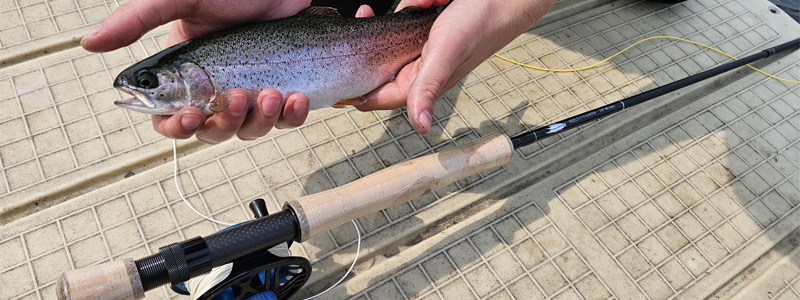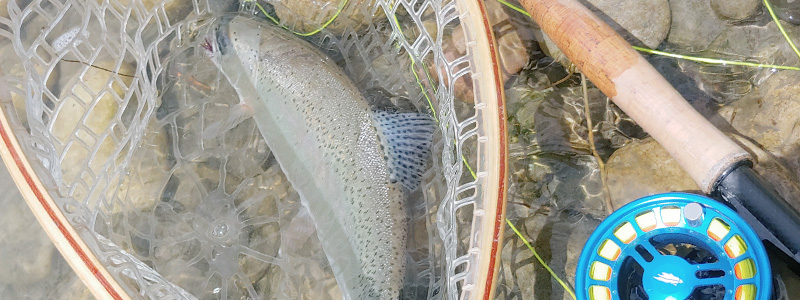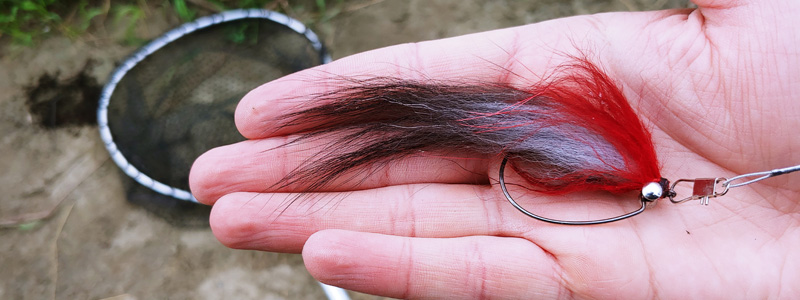Welcome to the amazing world of fly fishing! Did you know that fly fishing dates back to the 2nd century? Yep, that’s right, you read correctly, the 2nd century! Supposedly, the first recorded use of an artificial fly was described by a Roman teacher named Claudius Aelianus. He described how Macedonian anglers made a fly out of red wool and some feathers tied to a hook.
Whether you’re drawn to the serene beauty of pristine rivers or the thrill of landing your first trout (or other species!!!), fly fishing offers an unparalleled outdoor experience. In this guide, we’ll cover everything you need to know to get started on your fly fishing adventure. Let’s dive in!
Brief History of Fly Fishing
The roots of fly fishing can be traced back centuries, with references to the sport appearing in ancient texts as early as 200 CE. However, it wasn’t until the 19th century that fly fishing began to evolve into the refined art form we know today. Pioneers like Dame Juliana Berners and Izaak Walton helped popularize the sport through their writings in the 15th and 17th centuries respectively, while innovations in rod and line materials continued to shape its development.
Understanding the Basics of Fly Fishing
Unlike conventional fishing methods that rely on the weight of lures or bait to cast, fly fishing uses the weight of the line itself to deliver a nearly weightless artificial fly to the water. This distinctive approach requires skill, finesse, and a deep understanding of the aquatic environment.
The fly fishing ecosystem is diverse, encompassing a variety of water bodies. Rivers and streams are perhaps the most iconic settings for fly fishing, offering dynamic environments where anglers can target fish in riffles, pools, and runs. Lakes and ponds provide different challenges, often requiring specialized techniques like stillwater fishing. Each ecosystem demands a unique approach, making fly fishing a constantly evolving pursuit.
The Art of Casting

At the heart of fly fishing lies the art of casting. Unlike other forms of fishing where the weight of the lure propels the line, fly casting relies on the angler’s ability to manipulate the weighted line through the air. This requires a delicate balance of timing, power, and precision. It can take some time to get used to these types of casting techniques, so don’t be discouraged!
The goal is to present the fly as naturally as possible, mimicking the behavior of insects or small prey that fish feed on. This emphasis on presentation sets fly fishing apart and adds to its allure as both a sport and an art form.
Essential Fly Fishing Gear for Beginners

For those new to fly fishing, selecting the right gear can seem overwhelming. However, starting with a quality fly rod and reel combo is crucial. For beginners, a 9ft or 9ft6”, 5 or 6-weight rod is versatile enough to handle a variety of fishing situations.
When choosing a reel, look for one that balances well with your fly rod and has a smooth drag system. We offer our own high-quality 5/6 weight fly reel that meets these criteria perfectly.
The fly line is another critical element of your setup. For most beginners, a weight-forward floating line matching your rod’s weight is ideal. Our 6-weight line is a general purpose line, usable in a wide range of applications.
Don’t forget about the leader, which connects your fly line to the fly. A 9-foot tapered leader is a good starting point for most fishing situations.
For those looking for a complete setup, we offer a combo kit that includes our matched rod, reel, and line, along with backing and leader. This all-in-one package takes the guesswork out of assembling your gear and ensures all components work seamlessly together.
Although many accessories are optional, they can play a significant role in making your fly fishing experience more enjoyable and efficient. Waders keep you dry when fishing in rivers or streams. A vest or pack will help organize your gear, while nippers and forceps are indispensable for handling flies and unhooking fish. Polarized sunglasses are also crucial, not just for eye protection but for cutting glare on the water’s surface, allowing you to spot fish more easily.
Understanding fly types is fundamental to successful fly fishing. Dry flies are designed to float on the water’s surface, imitating adult insects. Nymphs mimic the larval or pupal stages of aquatic insects and are fished below the surface. Streamers represent larger prey like small fish or leeches and are often used to target bigger fish. Each type has its place in your fly box and learning when and how to use them is part of the joy of fly fishing.
Mastering Fundamental Fly Fishing Techniques

The art of fly casting is at the core of fly fishing, and mastering various casting techniques will greatly improve your success on the water. The overhead cast is the most basic and widely used cast, involving a back cast and forward cast to propel the line through the air.
The roll cast is useful in tight spaces or when there’s no room for a back cast, using the water’s surface tension to load the rod.
The false cast involves multiple back and forward casts without letting the line touch the water, used to adjust distance or dry off a fly.
Reading water is a crucial skill for any fly angler. It involves understanding where fish are likely to hold based on current patterns, underwater structure, and feeding opportunities. Look for areas where fast water meets slow water, behind rocks or logs, or along undercut banks. These spots provide fish with shelter from the current and easy access to food drifting by.
Proper fly presentation is about making your fly behave as naturally as possible in the water. This often means achieving a drag-free drift, where your fly moves at the same speed as the current. Mending your line – lifting and repositioning it on the water – can help achieve this natural drift. When fishing subsurface flies like nymphs, controlling the depth and speed of your fly is crucial.
Setting the hook in fly fishing requires a quick but gentle touch. Unlike conventional fishing where you might use a strong, sweeping motion, fly fishing typically involves a simple lift of the rod tip or a quick strip of the line. Once hooked, playing the fish involves maintaining tension on the line while absorbing the fish’s runs and jumps with your rod.
Choosing the Right Flies for Your First Outing

Selecting the right flies can seem daunting given the vast array of patterns available, but understanding the basics can simplify this process. Fly patterns are designed to imitate various forms of fish food, from aquatic insects in different life stages to small baitfish, crustaceans, and even terrestrial insects that might fall into the water.
For trout fishing, which is often where many anglers start their fly fishing journey, a few essential patterns can cover most situations. Dry flies like the Adams, Elk Hair Caddis, and Parachute Blue Wing Olive are excellent choices for imitating adult insects on the surface. For subsurface fishing, nymph patterns like the Pheasant Tail, Hare’s Ear, and Prince Nymph are proven fish-catchers. Don’t forget to include a few streamer patterns like the Woolly Bugger for imitating larger prey.
“Matching the hatch” is a fundamental concept in fly fishing, referring to the practice of selecting flies that closely imitate the insects fish are actively feeding on. This involves observing the water for signs of insect activity and even collecting samples to identify size, color, and species. While it may seem complex at first, developing this skill can significantly increase your success on the water.
Organizing your fly box is not just about neatness; it’s about efficiency on the water. Many anglers organize their boxes by fly type (dry flies, nymphs, streamers) or by insect species. Consider using small compartments or foam inserts to keep your flies secure and easily accessible. Labeling sections can also help you quickly find the right fly when you need it.
Navigating Fishing Regulations and Etiquette
Before embarking on your fly fishing adventure, it’s crucial to understand and comply with local fishing regulations. This typically involves obtaining the appropriate fishing license or permit for the area you plan to fish. Licenses can usually be purchased online or from local sporting goods stores. Some areas may require additional permits for specific waters or species, so always check the regulations for your chosen fishing spot.
Catch and release practices have become increasingly important in preserving fish populations and ensuring sustainable fishing for future generations. When practicing catch and release, use barbless hooks to minimize damage to the fish, handle fish with wet hands to protect their protective slime coating, and keep fish in the water as much as possible during the release process. Quick photos are fine, but prolonged air exposure can be harmful to fish.
That said, it’s perfectly acceptable to keep some fish for the table, as long as it’s done responsibly and in accordance with local regulations. Many anglers enjoy keeping a fish or two occasionally for a fresh meal.
Respecting other anglers and the environment is a fundamental aspect of fly fishing (and fishing in general) etiquette. Give other anglers space, especially in popular fishing spots. If you need to pass another angler on a stream, do so behind them or ask permission to pass through the water they’re fishing.
Always pack out what you pack in, leaving no trace of your visit. This includes properly disposing of fishing line, which can be hazardous to wildlife if left behind.
Safety should always be a top priority when fly fishing, especially when wading in rivers or streams. Wear a wading belt to prevent your waders from filling with water if you fall. Use a wading staff for extra stability, particularly in fast or uneven currents. Be aware of changing water conditions and weather, and always let someone know your fishing plans before heading out.
Planning Your First Fly Fishing Trip
Planning your first fly fishing trip can be exciting and a bit overwhelming. Start by researching local fishing spots and access points. Many areas have detailed fishing reports and guides available online or through local fly shops. Consider factors like the type of fish you want to target, the difficulty of access, and the techniques required for each location.
Understanding the best times of day and seasons for fly fishing can greatly increase your chances of success. Generally, early morning and late evening are productive times as many insects are most active during these periods. Seasonally, spring and fall often offer excellent fishing as water temperatures are favorable and fish are actively feeding. However, each location has its own patterns, so local knowledge is invaluable.
For beginners, hiring a guide for your first few outings can be an excellent investment. A good guide can teach you about local waters, help refine your casting technique, and increase your chances of catching fish. They can also provide insights into reading water, selecting flies, and practicing proper fishing etiquette. While more expensive than going solo, the knowledge gained from a guided trip can significantly accelerate your learning curve.
When packing for a day on the water, essentials include your fishing gear, appropriate clothing for the weather conditions, sun protection (including sunscreen, hat, and sunglasses), plenty of water, and snacks. Don’t forget a first aid kit, especially when fishing in remote areas. A waterproof bag or backpack can keep your gear dry and organized. Remember, it’s better to be over-prepared than to find yourself lacking a crucial item miles from the nearest store.
Conclusion
Congratulations! You’re now armed with the knowledge to embark on your fly fishing journey. Remember, fly fishing is as much about the experience as it is about catching fish. Embrace the learning process, enjoy the serenity of nature, and don’t be afraid to make mistakes – they’re all part of the adventure. As you practice and refine your skills, you’ll discover why fly fishing has captivated anglers for centuries. So, what are you waiting for? Grab your gear, head to the nearest river, and let the magic of fly fishing sweep you off your feet. Tight lines and happy casting!


